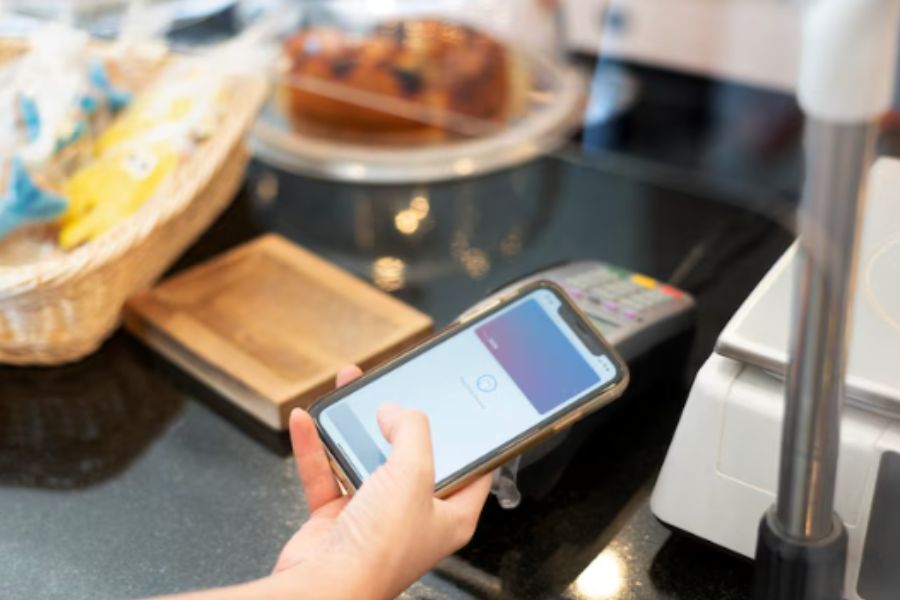In the bustling landscape of e-commerce, the role of point-of-sale systems is paramount. As businesses strive for seamless transactions and enhanced customer experiences, platforms like Shopify POS Go come into focus. Today, we delve into a comprehensive Shopify POS Go review to uncover its pros and cons. From its portable design to secure transactions, we navigate through the intricacies of this POS solution. Join us on this exploration of Shopify POS Go’s functionality, requirements, and pricing, aiming to equip merchants with insights for informed decision-making in the dynamic world of retail.
What is Shopify POS Go?
- Shopify POS Go: Shopify POS Go is a portable and compact POS system designed to facilitate in-person transactions for businesses operating both online and offline. Unlike traditional POS systems, Shopify POS Go extends the reach of merchants beyond the confines of a brick-and-mortar store. With its mobile design, it empowers merchants to process transactions on the Go, providing unprecedented flexibility and convenience. By seamlessly integrating with the Shopify platform, Shopify POS Go enhances the overall ecosystem for merchants. It facilitates a unified approach to managing sales, inventory, and customer interactions, allowing businesses to thrive in a dynamic and ever-evolving retail landscape.
- Portability and compact design: Shopify POS Go is tailored for mobility, allowing merchants to take their POS system wherever their business takes them. This agility is particularly beneficial for pop-up shops, markets, or businesses with varying points of sale.
- Integrated barcode scanner and card reader: The system is equipped with a built-in barcode scanner and card reader, streamlining the checkout process. This feature enhances efficiency by reducing the need for additional hardware and ensuring a swift and hassle-free customer experience.
- Security through Shopify payments: Security is a paramount concern in the world of transactions. Shopify POS Go addresses this by seamlessly integrating with Shopify payments, providing a secure payment environment for both merchants and customers alike.
- Access to store-level reports: Shopify POS Go empowers merchants with valuable insights through detailed store-level reports. This feature allows businesses to track sales, manage inventory, and make informed decisions based on real-time data.
- Quick-charging battery and high-performance processor: Practicality meets performance with a quick-charging battery and a high-performance processor. The rapid charging feature ensures that the device is always ready for action, and the processor guarantees a smooth and responsive user experience.
Pros of Shopify POS Go
Portable and compact design
Shopify POS Go’s design epitomizes mobility. Its portable and compact form factor liberates merchants from the constraints of a fixed checkout location. Whether at a pop-up event, trade show, or within the store premises, the device empowers merchants to take their business wherever opportunity knocks.
Built-in barcode scanner and card reader
Efficiency is paramount in the retail world, and Shopify POS Go delivers with its integrated barcode scanner and card reader. This all-in-one solution minimizes clutter and speeds up the checkout process, offering a seamless experience for both merchants and customers.
Secure transactions through Shopify payments
Security is non-negotiable when it comes to transactions. Shopify POS Go prioritizes this by channeling transactions through Shopify payments. This ensures a secure and trusted payment environment, instilling confidence in both merchants and customers alike.
Access to store-level reports
Informed decisions drive business success, and Shopify POS Go provides the tools for merchants to make them. The access to store-level reports offers valuable insights into sales trends, inventory levels, and customer behavior. Armed with this data, businesses can adapt and optimize their strategies for sustained growth.
Inventory management and transaction processing
Beyond facilitating transactions, Shopify POS Go is a robust inventory management tool. It allows merchants to keep a vigilant eye on stock levels, manage product variants, and streamline the transaction process. This ensures that businesses stay organized and responsive to customer demands.
Quick-charging battery and high-performance processor
Shopify POS Go doesn’t just promise mobility; it delivers with a quick-charging battery and a high-performance processor. The rapid charging feature ensures that downtime is minimized, and the processor guarantees a smooth and responsive user experience. Merchants can focus on serving customers without worrying about technical glitches.
Cons of Shopify POS Go
Incompatibility with Bluetooth-enabled hardware
One significant drawback of Shopify POS Go lies in its incompatibility with Bluetooth-enabled hardware. This limitation can impact the flexibility and adaptability of the point-of-sale system for merchants who rely on or prefer devices and accessories that utilize Bluetooth connectivity.
Bluetooth-enabled hardware, such as barcode scanners, receipt printers, and card readers, is commonly used in retail environments to enhance the efficiency of transactions and streamline the overall customer experience. However, Shopify POS Go’s lack of support for these Bluetooth peripherals may limit the range of compatible accessories that merchants can seamlessly integrate with the system.
This incompatibility issue could be particularly relevant for businesses with pre-existing hardware investments or those seeking specific functionalities that are only available through Bluetooth-enabled devices. Merchants should carefully assess their hardware requirements and consider the potential impact on their daily operations before choosing Shopify POS Go as their preferred point-of-sale solution. Businesses should explore alternative POS systems that align more closely with their specific hardware needs if Bluetooth compatibility is a critical factor for their operations.
Additional costs for optional add-ons
While Shopify POS Go comes with a core set of features, merchants should be cautious about potential additional costs associated with optional add-ons. These supplementary features, while enhancing the system’s capabilities, can contribute to increased overall expenses. Merchants need to carefully evaluate their business requirements and budget considerations to determine whether these add-ons are essential for their operations.
The cumulative effect of opting for multiple add-ons can significantly impact the overall cost of ownership of Shopify POS Go. Merchants should factor in these additional expenses when assessing the affordability and long-term viability of the POS system, ensuring that the investment aligns with their business growth strategy.
Shopify POS Go requirements: Shopify merchants need to enable Shopify payments
The significant drawback associated with Shopify POS Go is its strict dependency on Shopify payments for functionality. Merchants utilizing this point-of-sale system are compelled to enable Shopify payments as their primary payment processing solution on their online store. While Shopify payments itself is known for its security features and integration benefits, this requirement imposes limitations on merchants who may already have established relationships with alternative payment processors.
For businesses with existing agreements or preferences for specific payment gateways, the exclusive reliance on Shopify payments may be restrictive. Merchants may find themselves navigating additional steps to transition their payment processing, potentially incurring changes to their financial processes and risking service disruptions. This dependency also means that merchants might miss out on potential cost savings or tailored features offered by alternative payment processors that better suit their business model.
Shopify’s integrated payment processing, on their online store
Potential additional costs and fees: while Shopify payments are seamlessly integrated into the Shopify ecosystem, merchants should be mindful of potential additional costs and transaction fees associated with this payment processing system. Depending on the merchant’s transaction volume and subscription plan, these fees may impact overall operational costs. Some businesses might find that alternative payment processors offer more competitive rates or better terms suited to their specific needs.
Geographic limitations and currency support: Shopify payments may have geographic limitations, and its full range of features may not be available in all regions. Additionally, the supported currencies might be limited, potentially impacting merchants with international customers or those operating in regions with different currency preferences. This limitation could hinder the expansion and global reach of businesses relying on Shopify POS Go.
Dependency on Shopify’s policies: merchants using Shopify payments through Shopify POS Go are subject to Shopify’s payment processing policies. Any changes or updates to these policies may directly affect the way merchants handle transactions and receive funds. This dependency on external policies might lead to adjustments in business operations or necessitate compliance with rules that might not align with the preferences or strategies of certain merchants.
In-depth review of Shopify POS Go
Embarking on a comprehensive Shopify POS Go review unveils a versatile and mobile point-of-sale (POS) solution tailored for Shopify merchants. Designed for in-person transactions, Shopify POS Go amalgamates practicality and functionality, making it a pivotal asset for businesses seeking a seamless retail experience.
- Overview of Shopify POS Go’s functionality: at the heart of Shopify POS Go lies a commitment to versatility. Its portable design facilitates on-the-go transactions, complemented by a built-in barcode scanner and card reader for swift checkouts. Security is paramount, seamlessly integrated with Shopify payments to ensure trust in financial transactions. Store-level reports empower merchants with data-driven insights, enhancing decision-making. From inventory management to quick-charging batteries and high-performance processors, Shopify POS Go is a powerhouse of features.
- Requirements for usage: to harness the full potential of Shopify POS Go, certain requisites must be met. Merchants need an active Shopify account, linking seamlessly with their online store. Enabling Shopify payments is imperative for a synchronized payment experience, and a stable internet connection ensures real-time updates, enhancing operational efficiency.
- Pricing and fees: in the realm of pricing and fees, Shopify offers diverse subscription plans tailored to businesses of varying sizes. Transaction fees, dependent on the chosen plan, might apply. Merchants should be mindful of potential additional costs related to optional add-ons, enhancing functionalities based on individual needs. An informed evaluation of these costs ensures a transparent understanding of the overall investment.
User guide: Getting started and setting up
Setting up Shopify POS Go is a straightforward process involving key steps to ensure seamless integration and optimal use. Here’s a step-by-step guide to getting started:
- Sign up for Shopify’s free trial: to embark on the Shopify POS Go journey, begin by signing up for Shopify’s free trial. Visit the Shopify website, where you’ll find a user-friendly sign-up process. Follow the prompts to create your account, providing essential details about your business.
- Connecting Shopify account to POS Go: after successfully signing up for Shopify, the next step is to connect your Shopify account to the POS Go device. Access the Shopify admin panel and navigate to the ‘settings’ section. Look for the ‘devices and POS’ or a similar category, and here you’ll find the option to connect your POS Go device. Follow the on-screen instructions to establish a secure connection.
- Setting up the POS Go device: once your Shopify account is linked, proceed to set up the POS Go device. Unbox the POS Go hardware and power it on. The device should guide you through an initial setup process, including connecting to a stable Wi-Fi network and updating to the latest software. Customize your settings, such as receipt preferences and tax rates, to align the POS Go system with your business requirements.
- Processing sales and utilizing features: with the initial setup complete, you’re ready to start processing sales and making the most of Shopify POS Go’s features. Use the built-in barcode scanner to effortlessly scan products, streamlining the checkout process. Leverage the card reader for secure and efficient transactions. Familiarize yourself with the system’s user interface to navigate through the POS features, including inventory management and reporting tools.
Contrasting Shopify POS Go with ConnectPOS
- Geographic reach: Shopify POS Go is tailored primarily for U.S.-based merchants, limiting its accessibility for businesses beyond these borders. In contrast, the geographic availability of the POS solution ConnectPOS is more expansive, catering to a broader international audience.
- Hardware compatibility: Shopify POS Go’s potential limitation with Bluetooth-enabled hardware might impact the choice of peripherals for some businesses. Connect POS’s stance on hardware compatibility is crucial to assess, ensuring seamless integration with the devices merchants rely on.
- Cost considerations: Both platforms may incur costs, but the nature and extent of these expenses differ. Merchants should scrutinize pricing plans, transaction fees, and potential additional costs for add-ons to make informed decisions aligned with their budgetary constraints.
Conclusion
In wrapping up our exploration of Shopify POS Go and providing insights into its pros and cons, this review offers a comprehensive understanding of its functionalities. From its portable design to potential limitations in hardware compatibility, merchants must weigh these factors against their specific business needs. For a deeper dive into this information or any lingering inquiries, feel free to contact us. Your business deserves a POS system tailored to its unique needs, and our team at ConnectPOS is ready to assist.



